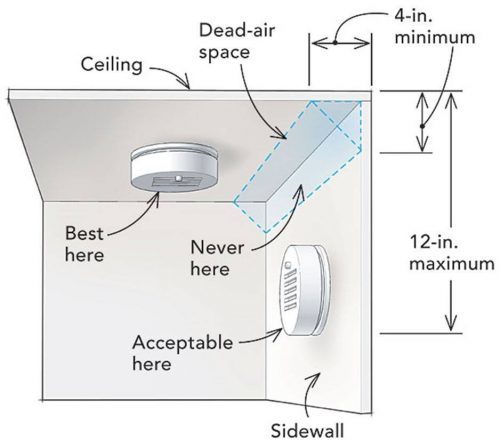This guide looks at the question, where to place carbon monoxide (CO) detectors to ensure the maximum benefits?
Carbon monoxide is colorless and odorless but can be fatal when people are exposed to higher levels. Undoubtedly, the easiest way to stay safe from these emissions is by installing a CO detector(s).
The emissions are even unhealthier when they are inside the house.
Whether it is your bathroom, your kid's bedroom or your kitchen, the carbon monoxide emissions can be present at several places inside your home and you may be completely unaware of the emissions without a CO detector.
What does the proper placement of carbon monoxide detectors actually mean?
Proper placement of these detectors will mean not getting carbon monoxide poisoning along with severe headache, respiratory issues and dizziness. If installed properly at the appropriate spots throughout your home, CO alarms can be really effective, making the most of their use.
What should be done when placing CO detectors?
- First things first, always make sure to follow the instructions from the manufacturer as to where the detectors should be placed.
- I will always recommend deciding the number of CO detectors according to the size of the house. This also means that it is crucial to place detectors in places where your family spends the most time. It is also recommended placing CO detectors in places that are less frequent but can accumulate carbon monoxide emissions, such as the basement or the garages.
- Install CO detectors near bedrooms, not just for the elderly or children but also near to every bedroom as carbon monoxide emissions can be present because of numerous appliances used inside homes. If placing a CO detector for every bedroom is an issue then they can be placed in between two bedrooms.
- The ideal height for CO detectors is five feet above the ground. Try to implement this and the detector will serve the purpose right.
- Connecting the detectors is also a good idea as it will ensure all the detectors to sound when one detects the presence of carbon monoxide and making sure attention is paid.
- Keep the detector clean to optimize the use.
What should not be done when placing CO detectors?
- Don’t place them within the reach of children, just to be on the safe side.
- I would also recommend not installing the CO detector in direct sunlight as heating could also create issues.
- Avoid the problem of false alarms in the proximity of fuel-burning devices or excessive humid areas such as the bathroom.
- Placing CO detectors near windows as it may hamper the proper detection of CO levels.
Final point:
Hopefully, now you have an idea where to place carbon monoxide detectors (and where not to place them).
Here's a few final points I'd like to make.
Make sure you always check if your CO detectors are working properly and if the battery is changed regularly to check its proper functioning.
To sum up, carbon monoxide detectors are essential in homes for health reasons. They prevent deadly carbon monoxide poisoning. The use of CO detectors in homes is often neglected but their presence does a lot more good than what is generally assumed.
In addition, taking correct actions after the alarm rings is crucial. The first step involves moving outside if the detector makes a sound.
Make the optimum use of these CO detectors and keep yourself and your family safe from carbon monoxide hazards.
Read this article for information on how to install a carbon monoxide detector.

